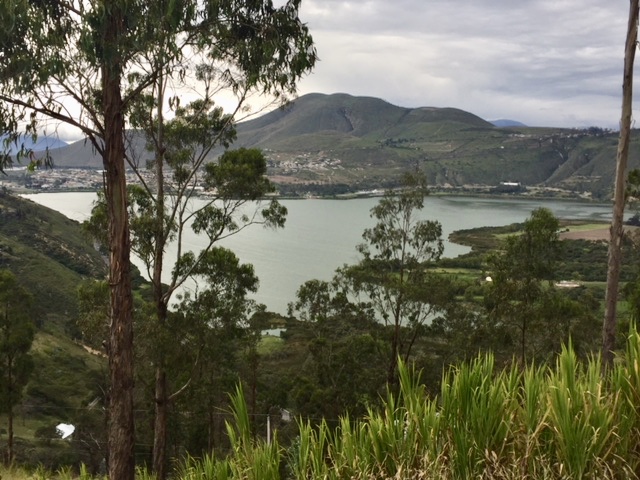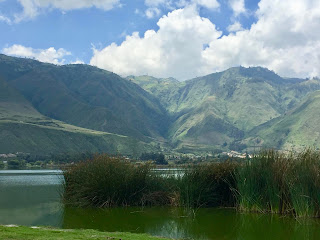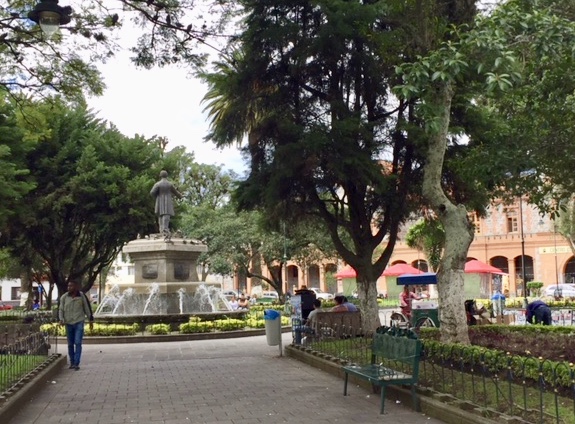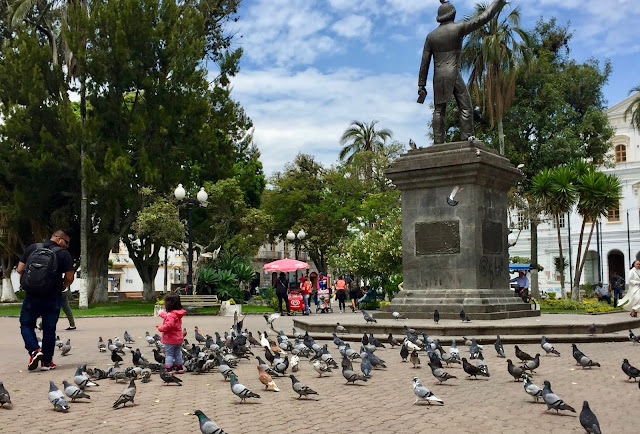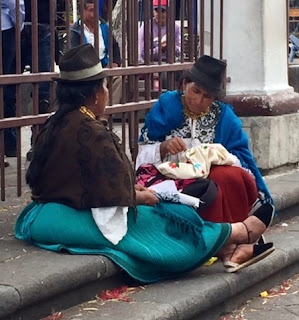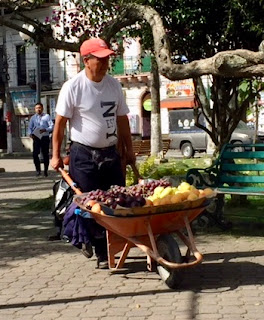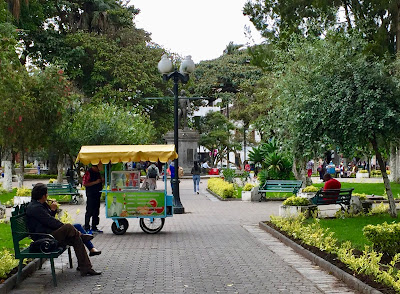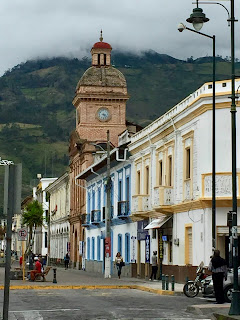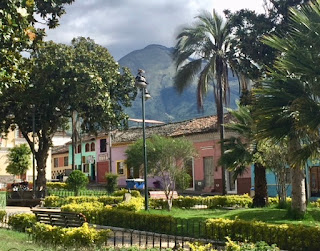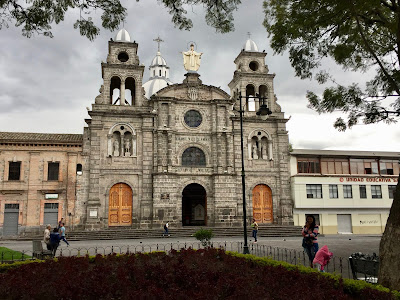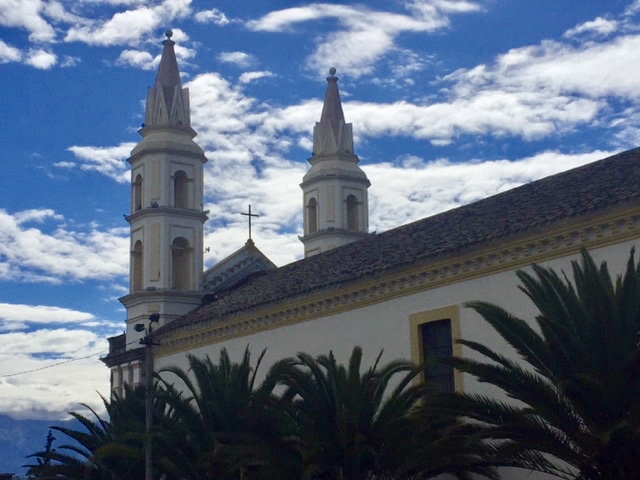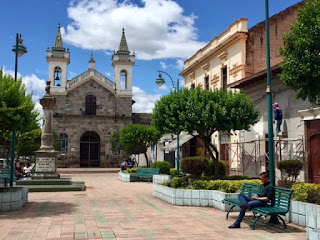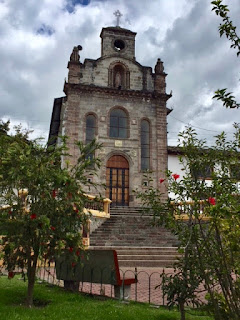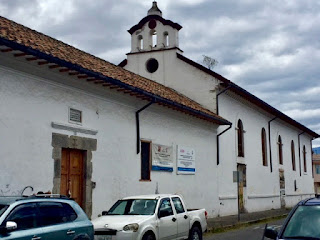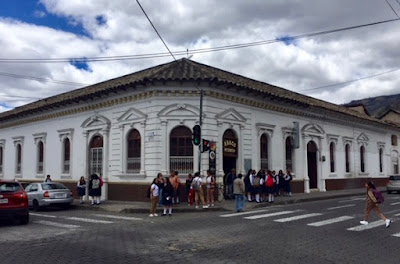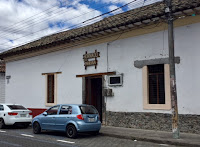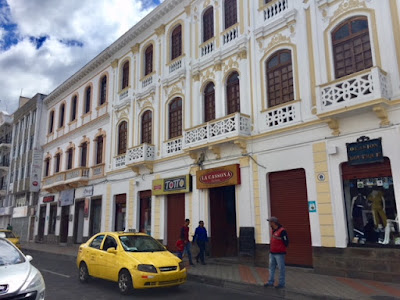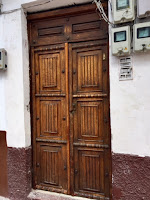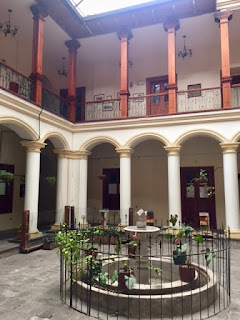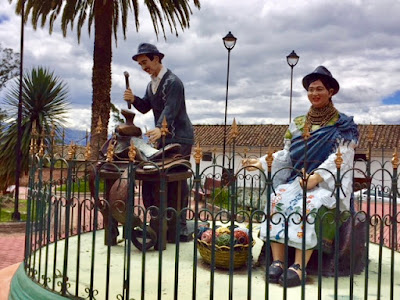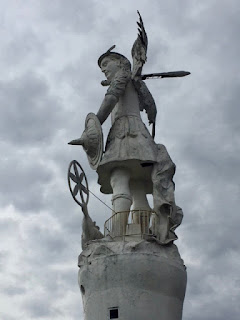 |
| The San Miguel Arcangel overlooks and protects the city. |
Ibarra is a colonial city (population 140,000) located in the northern part of Ecuador in the Province of Imbabura. It is set in a bowl at 7,300 feet surrounded by mountains and volcanos, and has easy access to the coast toward the west, the Orient/ Rainforest to the east and the Columbian border to the north. Ibarra was founded in 1606 but almost completely destroyed in an 1868 earthquake. Today, its historical architecture and culture are alive and well, rich with Spanish influence. Although primarily an agricultural centerpoint, Ibarra does have two universities and industries related to textiles and technology. Ibarra is considered one of the most diverse cities in Ecuador with large populations of Spanish Mestizo, a variety of autonomous Indigenous communities, Afro-Ecuadorians and a hearty flow of Venezuelans and Columbians who are migrating into Ecuador from their countries to the north. Ibarra is well known for its “tranquilo” (or relaxing) lifestyle. Some of this can be attributed to its favorable climate with year around temperatures between 45-85 degrees every day of the year. Because it is located on the Equator it only has two seasons: wet and dry.
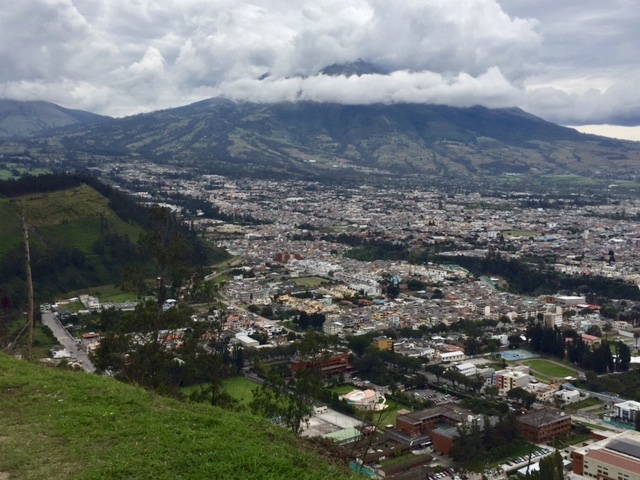 |
| The view from the Arcangel |
| Rent a paddle boat or a kayak for the afternoon! |
 The plazas are my favorite part of Ibarra. They are always adorned with beautiful flowers, trees, public art and fountains. In the Latino culture, it is important to take part of your day to relax and spend time with family or friends. Often, the parks and plazas are where they gather. I sit on the bench to watch old ladies feed the pigeons, or Indigenous women working on their needlepoint, men playing cards, and the vendors selling ice cream, wheelbarrows of grapes, peaches, or a chance to ride on their wooden horse.
The plazas are my favorite part of Ibarra. They are always adorned with beautiful flowers, trees, public art and fountains. In the Latino culture, it is important to take part of your day to relax and spend time with family or friends. Often, the parks and plazas are where they gather. I sit on the bench to watch old ladies feed the pigeons, or Indigenous women working on their needlepoint, men playing cards, and the vendors selling ice cream, wheelbarrows of grapes, peaches, or a chance to ride on their wooden horse. Ibarra has an historical center with many large colonial buildings. It is known as the
“White City” for the prominent color of paint on these buildings. I have heard that historically
the white color was used to keep mosquitos at bay. Now, it’s the trademark of Ibarra.
a cafe or a cultural museum waiting to be explored.
Clay people such as these grace the entrance way of most cities in this region.
Their clothes, and their actions are meant to represent the culture of the town.
| Murals and artwork also cover the sides of many buildings and fill the markets. |
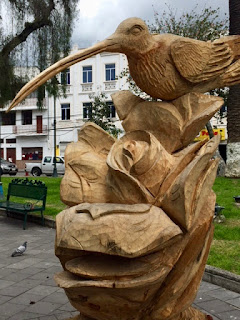 |
| One day there was a wood carving contest in the park. I watched a man carve this with a chainsaw and a chisel. |
| Wooden statues – religious or non-religious are a popular art form here, and artisan workshops line the streets. |
| The Cuartel was built as a Military outpost, but now is an art museum, event center and public library. |
| Above ground cemeteries are also a prominent landmark in Ecuador. Families keep the tombs of loved ones adorned with flowers and photos. I think their paths are fun to explore. |
But to me, the best part of Ibarra is its stunning scenery. Mountains in every direction…
| The city below in the setting sun as seen from my house. |
| Finally, I live on the outskirts of Ibarra and I love to explore the nearby fields and pastures. On my way to work, I often see this man, or his wife, walking their cow down the sidewalk to a nearby field of grass. |


